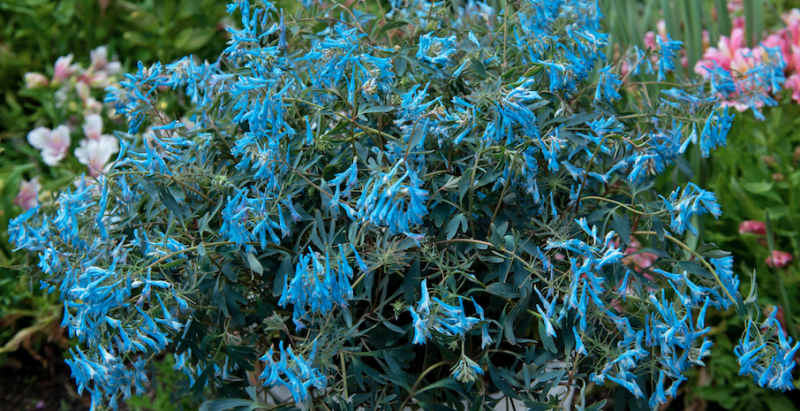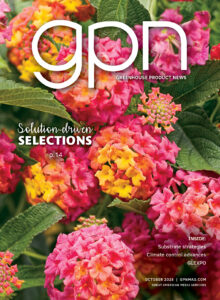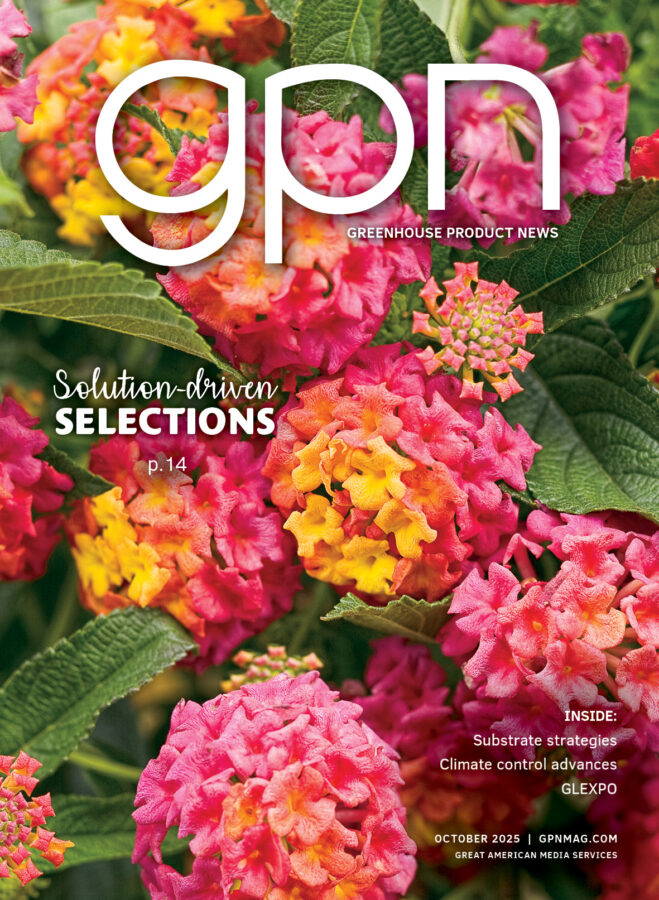
Culture Report: Corydalis flexuosa ‘Porcelain Blue’
Our team was truly amazed by how truly blue this corydalis from Plant Haven was our first time seeing it at the California Spring Trials. No hints of greens or lavenders, this is a true brilliant blue color with masses of large pendulous blooms. Not just a novelty on color, ‘Porcelain Blue’ has an incredibly long flowering period — first flushing in spring and then continuously reblooming throughout the summer and autumn.
The foliage of ‘Porcelain Blue’ is also striking with its strong blue-green color with bronze accents on the leaves and stems. This variety does not suffer from summer dormancy like other cultivars, making it a durable landscape item providing a reliable source of vibrant color in partial to fully shaded locations.
In the garden, ‘Porcelain Blue’ will reach a height and width of 12 to 18 inches with an upright clumping form. The plants are Zone 5 hardy and will flower throughout the summers when nighttime temperatures remain below 80º F.
GROWING
‘Porcelain Blue’ is produced from tissue culture, so we recommend starting with the 72-cell liners that are available from Gulley Greenhouse, Green Leaf Plants, Skagit Gardens and Pacific Plug & Liner.
MEDIA
Use a bulky soilless medium with very good aeration and drainage with a pH of 5.8 to 6.5. Corydalis prefers to stay adequately moist throughout the production, but not overly wet. The bulky, open mix will assist with plenty of oxygen to the root zone.
TEMPERATURES
One of the unique attributes of ‘Porcelain Blue’ is its ability to continue growing and flowering during warm summer temperatures, when most varieties go into a summer dormancy. During production though, it is best to transplant liners in the fall when nighttime temperatures will consistently be below 80º F.
LIGHT
Plants can be produced either in the greenhouse or outdoors in the nursery but will require 30 to 50% shade during production. Plants are not daylength sensitive and will flower any time of the year.
WATERING
Keep plants consistently moist for healthy growth and root structures, and do not allow the plants to wilt. Keep the foliage dry at night and have good air circulation around the plants after watering. Preventative fungicides are recommended at transplant to maintain a healthy root system.
FERTILIZER
Keep plants on an even feed of 100- to 200-ppm nitrogen. Leach plants periodically with clear water to prevent salt damage.
PINCHING AND GROWTH REGULATORS
No pinching is necessary for corydalis. Growth regulators are rarely needed for corydalis, and strong habits should be encouraged with appropriate nighttime temperatures.
WARM WINTER SCHEDULING
In California, transplants should begin in week 35 where plants can bulk over the winter for sales beginning in week 4 and onward.
In Southern states, begin transplanting when night temperatures consistently stay below 80º F (week 40 and onward). Follow scheduling for southern hellebore programs and hosta. Sales will begin week 14 and onward.









 Video Library
Video Library 


















